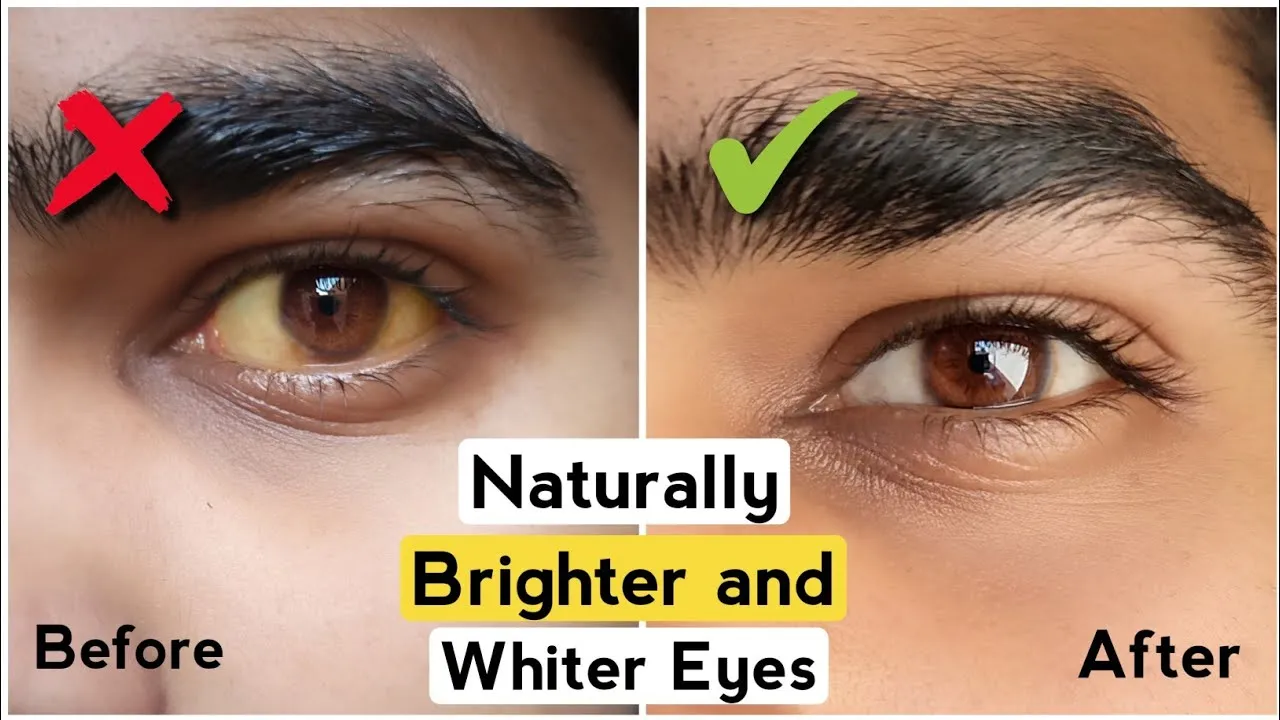Why Do Eyes Appear Red or Yellowish
The appearance of red or yellowish eyes can be a source of concern, often signaling underlying issues that impact both the aesthetic appeal and the health of your eyes. Several factors contribute to this discoloration, ranging from temporary irritations to more serious medical conditions. Understanding these causes is the first step towards finding effective solutions to achieve whiter, healthier-looking eyes. Recognizing the reasons behind this change is crucial for determining the appropriate course of action, whether it involves simple home remedies or professional medical attention. It’s important to be aware that maintaining eye health is an ongoing process, and understanding the root causes can help prevent future occurrences.
Common Causes of Red or Yellow Eyes
The color of your eyes can be affected by many things. The most common reasons behind red or yellowish eyes include a range of factors. These vary from simple irritations caused by environmental elements to more serious underlying health concerns. Paying close attention to the specific triggers and symptoms can guide you towards more effective strategies for maintaining eye health and achieving a brighter, healthier appearance. A better understanding will allow you to address the issue and find ways to restore the natural brightness of your eyes, as well as seeking professional help when needed.
Environmental Factors
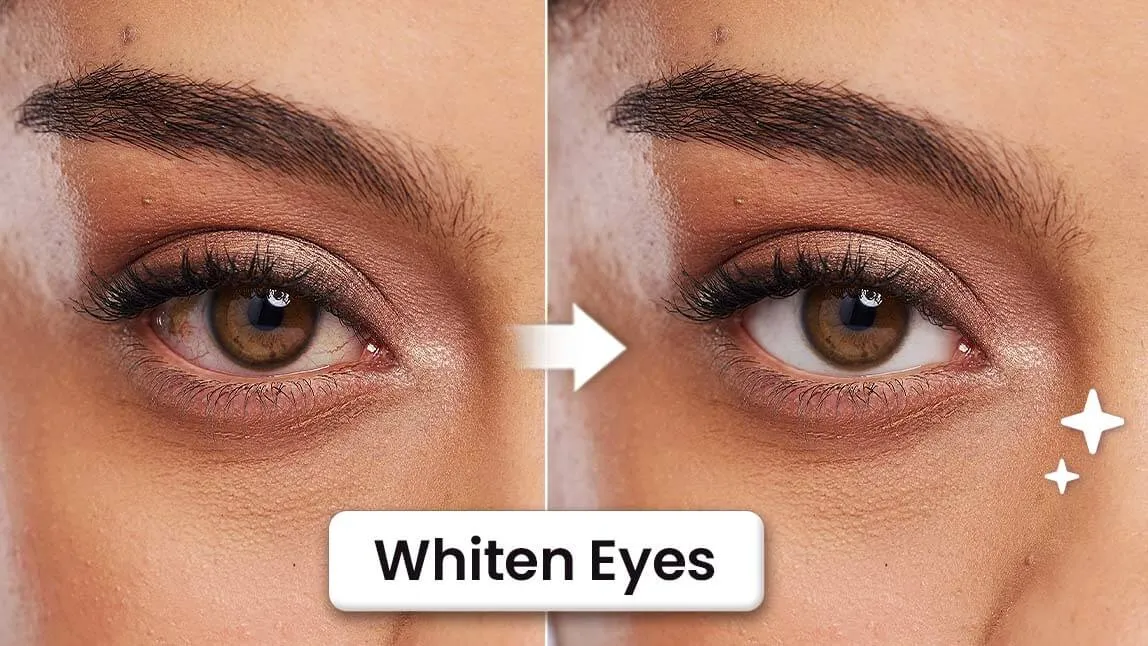
Environmental factors play a significant role in the appearance of your eyes, often leading to redness and irritation. Exposure to pollutants like smoke and smog, as well as allergens such as pollen and dust mites, can trigger an inflammatory response in the eyes, causing them to become red, itchy, and watery. The dry air prevalent in many environments, whether from air conditioning or heating systems, can also exacerbate these issues by reducing the eye’s natural lubrication. Additionally, bright sunlight and wind can contribute to eye redness by causing dryness and irritation. Being mindful of these external elements and taking preventative measures, such as using protective eyewear or avoiding exposure during peak allergen seasons, can help alleviate these symptoms and maintain clearer, whiter eyes.
Lifestyle Choices
Lifestyle choices heavily influence the condition of your eyes. Habits like excessive alcohol consumption and smoking can lead to red, bloodshot eyes. Alcohol dilates blood vessels, which increases blood flow to the eyes, causing them to appear red. Smoking, on the other hand, introduces irritants and toxins that inflame the eyes. Furthermore, a lack of sleep and prolonged screen time contribute to eye strain and dryness, making the eyes look tired and discolored. The choices you make daily significantly impact your eye health. Making positive choices, like getting adequate sleep, limiting screen time, and avoiding alcohol and smoking, can drastically improve your eye appearance and overall health, promoting clearer and whiter eyes.
Underlying Health Conditions
The appearance of your eyes can also be an indicator of underlying health conditions. Red or yellowish eyes can sometimes signal more serious medical issues that require professional attention. Conditions like conjunctivitis, also known as pinkeye, can cause redness, swelling, and discharge. Allergies can also cause redness and itchiness. Furthermore, more serious conditions like uveitis (inflammation of the eye), glaucoma, or even liver problems (which can lead to a yellowish tint) can manifest through eye discoloration. If you experience persistent eye redness or any accompanying symptoms such as pain, vision changes, or discharge, it is crucial to consult a healthcare professional to determine the root cause and receive appropriate treatment. The eyes are delicate, and early intervention can prevent more serious complications.
Top Natural Methods for Whiter Eyes
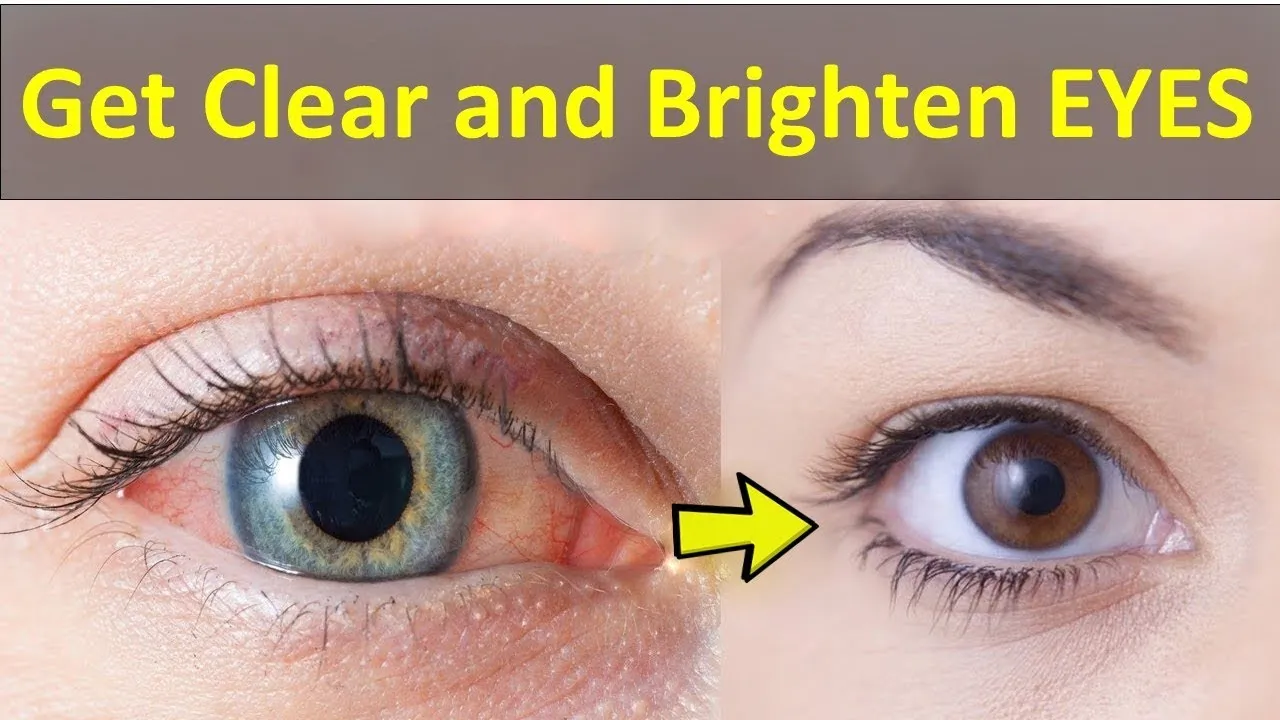
If you’re looking for natural ways to brighten your eyes, there are several effective methods you can try. Implementing these techniques can help reduce redness and irritation, leading to a more refreshed and vibrant appearance. These methods are generally safe and can be easily incorporated into your daily routine. Remember that consistency is key, and patience is important. Combining several of these strategies can maximize your results and contribute to healthier eyes. By adopting these natural approaches, you can achieve a brighter and more appealing look without relying on harsh chemicals or invasive procedures. These are the most commonly used and easy to perform methods.
Hydration and Diet for Brighter Eyes
Proper hydration and a balanced diet are crucial for maintaining the health and appearance of your eyes. Dehydration can lead to dryness, which can make eyes appear red and irritated. Drinking an adequate amount of water each day keeps your eyes properly lubricated and reduces the likelihood of redness and discomfort. A diet rich in nutrients, especially vitamins A, C, and E, as well as omega-3 fatty acids, supports eye health. These nutrients help protect the eyes from damage and promote optimal function. Consuming foods like carrots, spinach, citrus fruits, and fatty fish can provide these essential nutrients. A well-hydrated body and a nutrient-rich diet are key components for achieving brighter, clearer eyes naturally, supporting both overall health and the appearance of your eyes.
Importance of Proper Hydration
Staying hydrated is a cornerstone of good eye health, directly impacting the appearance and comfort of your eyes. Water helps maintain the proper moisture levels in your eyes, preventing dryness and irritation, which can cause redness and a tired appearance. When you’re dehydrated, your eyes produce fewer tears, which are essential for lubricating and protecting the eyes from external irritants. Aiming to drink at least eight glasses of water a day ensures that your eyes remain well-hydrated and function optimally. You can also incorporate hydrating foods like cucumbers and watermelon into your diet to further support your hydration levels. Adequate hydration not only contributes to whiter eyes but also enhances your overall well-being.
Foods That Support Eye Health

Your diet plays a pivotal role in maintaining healthy eyes and promoting a brighter appearance. Certain foods are rich in nutrients that specifically support eye health, helping to reduce redness and improve overall clarity. Foods high in vitamin A, such as carrots, sweet potatoes, and leafy greens, are essential for maintaining good vision and preventing dry eyes. Vitamin C, found in citrus fruits, bell peppers, and strawberries, acts as an antioxidant, protecting the eyes from damage. Vitamin E, present in nuts, seeds, and vegetable oils, also provides antioxidant benefits. Omega-3 fatty acids, abundant in fatty fish like salmon and tuna, help reduce inflammation and support retinal health. Incorporating these nutrient-rich foods into your diet can significantly contribute to whiter, healthier-looking eyes and prevent various eye-related issues.
The Power of Eye Drops
Eye drops are a convenient and effective way to combat redness and dryness, offering immediate relief for irritated eyes. They work by lubricating the eyes, washing away irritants, and reducing inflammation. Different types of eye drops serve various purposes, so choosing the right one for your needs is important. Using eye drops can quickly restore a clear, refreshed appearance. They are a practical tool in achieving and maintaining whiter, brighter eyes, making them a useful part of your daily eye care routine. Always follow the instructions on the product label for best results. Remember to consult your doctor if you have any doubts.
Choosing the Right Eye Drops
Selecting the right type of eye drops is crucial for effective treatment and optimal eye health. Several options are available, each designed to address different issues. Artificial tears are designed to moisturize dry eyes, providing instant relief from irritation. These are available without a prescription and are generally safe for frequent use. For redness caused by allergies or irritation, antihistamine eye drops can provide relief by reducing inflammation and itchiness. Decongestant eye drops can constrict blood vessels in the eyes, temporarily reducing redness, but they should be used sparingly, as overuse can lead to rebound redness. If you have any underlying medical conditions or are unsure, consult an eye care professional to determine the best type of eye drops for your specific needs and to ensure they are safe for your individual use. This approach will help prevent any complications.
How to Use Eye Drops Effectively
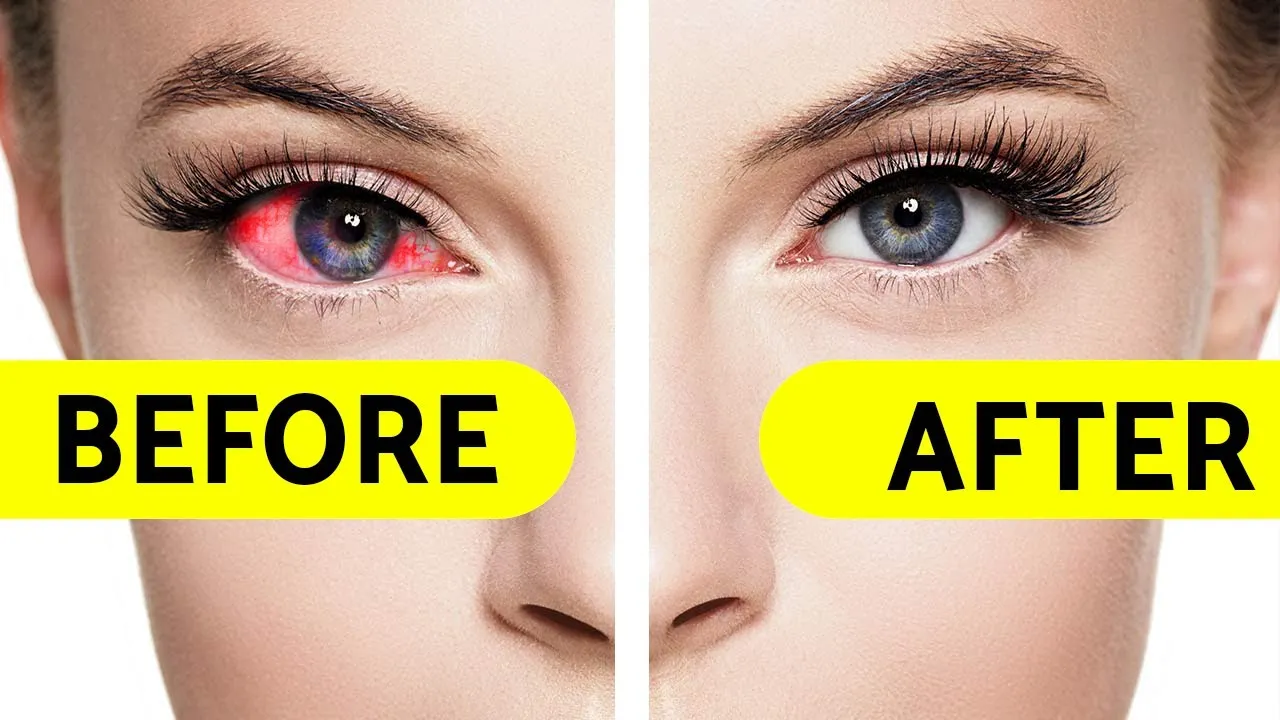
Using eye drops correctly is essential to maximize their effectiveness and minimize any potential side effects. Always start by washing your hands thoroughly to prevent contamination. Tilt your head back and gently pull down your lower eyelid to create a small pocket. Hold the eye drop bottle above your eye and squeeze a single drop into the pocket, being careful not to touch the dropper tip to your eye or any other surface. Close your eye gently and press lightly on the inner corner of your eye for about a minute to prevent the drops from draining into your tear duct. If you are using multiple types of eye drops, wait several minutes between applications. Following these steps ensures that the drops are properly administered, providing maximum relief and helping you achieve brighter, healthier eyes.
Effective Home Remedies for Eye Whitening
In addition to lifestyle adjustments and eye drops, several home remedies can help naturally whiten your eyes. These remedies are often safe and easy to incorporate into your daily routine. Whether it’s the soothing effect of compresses or the benefits of proper sleep, these methods can complement other strategies to achieve a brighter, clearer appearance. When used consistently, these simple techniques can help to reduce redness and irritation, contributing to healthier, more vibrant eyes. Integrating these remedies into your eye care routine can offer a holistic approach to eye whitening, enhancing the overall appearance and well-being of your eyes.
Warm Compresses and Their Benefits
Warm compresses are a simple yet effective home remedy for reducing eye redness and irritation. The warmth helps to relax the muscles around the eyes, increasing blood flow and promoting healing. To use a warm compress, soak a clean washcloth in warm (not hot) water, wring out the excess, and gently place it over your closed eyelids for 5-10 minutes. The heat from the compress can soothe the eyes, loosen any debris, and reduce inflammation. This can be particularly helpful for dry eyes or those experiencing eye strain. Applying a warm compress several times a day can provide noticeable relief and contribute to a brighter, more refreshed appearance.
Cold Compresses for Redness

Cold compresses are a valuable tool in reducing eye redness and swelling. Cold temperatures help constrict blood vessels, thereby reducing inflammation and redness. To use a cold compress, soak a clean washcloth in cold water, wring out the excess, and gently place it over your closed eyelids for 5-10 minutes. Alternatively, you can use a cold eye mask or a bag of frozen peas wrapped in a cloth. Cold compresses are particularly beneficial after a long day of screen time, after crying, or when dealing with allergies that cause puffy eyes. Using a cold compress can quickly alleviate redness and refresh your eyes, contributing to a clearer and more alert appearance.
The Role of Sleep and Rest
Adequate sleep and rest are fundamental for maintaining healthy eyes and achieving a brighter appearance. During sleep, your body repairs and regenerates, including the tissues of your eyes. When you don’t get enough sleep, your eyes can become red, bloodshot, and puffy. Aim for 7-9 hours of quality sleep each night to allow your eyes to rest and recover. In addition to sleep, taking breaks during the day is important, particularly if you spend a lot of time looking at screens. The 20-20-20 rule—every 20 minutes, look at something 20 feet away for 20 seconds—can help reduce eye strain and promote eye health. Prioritizing sleep and rest is essential for overall well-being and can significantly improve the appearance of your eyes.
How Sleep Impacts Eye Appearance
Sleep has a direct and significant impact on the appearance of your eyes. When you sleep, your body repairs and rejuvenates itself, including the delicate tissues around your eyes. During this time, blood vessels relax, reducing redness and puffiness. Sleep deprivation, on the other hand, can lead to dilated blood vessels, causing your eyes to appear red and tired. Moreover, insufficient sleep can exacerbate dark circles under the eyes, further contributing to a fatigued look. Prioritizing sleep helps to keep the eyes well-rested and refreshed, promoting a brighter, clearer appearance. Ensuring you get adequate sleep each night can have a transformative effect on how your eyes look and feel, enhancing your overall well-being.
Creating a Relaxing Sleep Routine
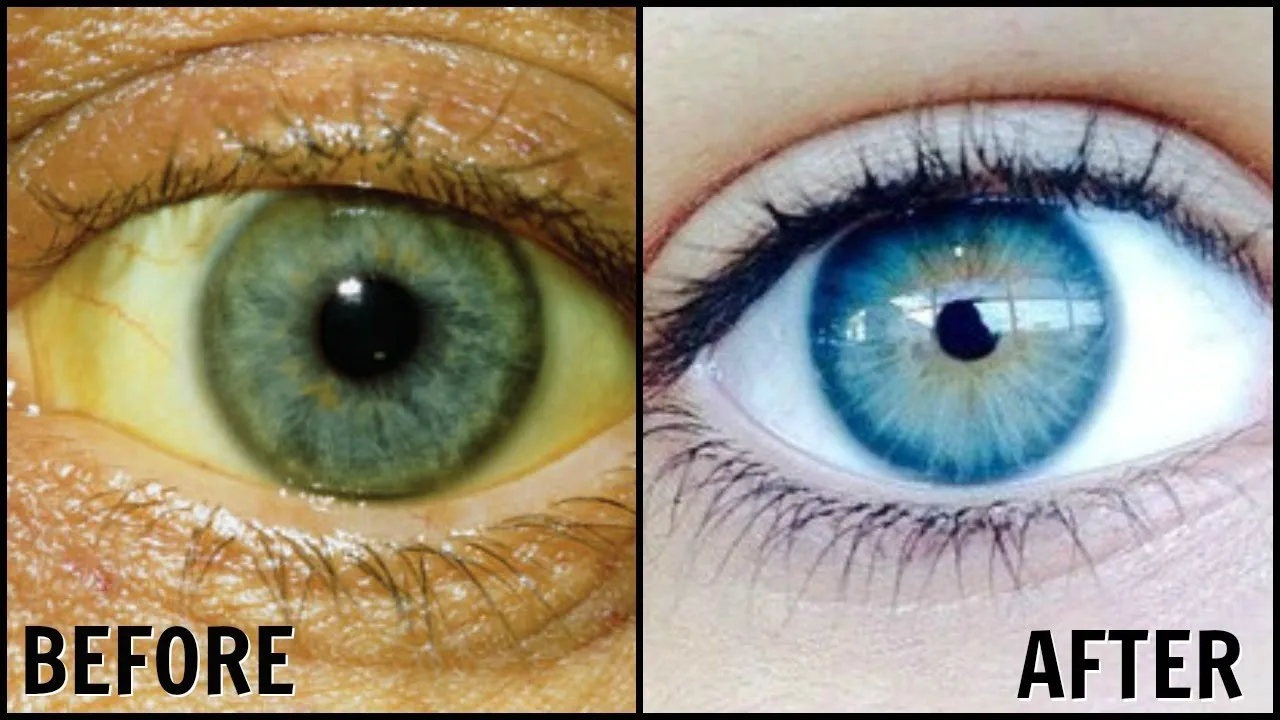
Establishing a relaxing sleep routine can dramatically improve both the quality of your sleep and the appearance of your eyes. A consistent bedtime and wake-up time help regulate your body’s natural sleep-wake cycle. Creating a restful sleep environment is crucial. This includes ensuring your bedroom is dark, quiet, and cool. Avoid screen time (phones, tablets, computers) for at least an hour before bed, as the blue light emitted can interfere with sleep. Activities like reading a book, taking a warm bath, or listening to calming music can help you wind down and prepare your body for sleep. By consistently following this routine, you can improve your sleep quality, reduce eye redness and fatigue, and promote a brighter, healthier eye appearance.
Avoiding Irritants for Eye Health
Avoiding irritants is a crucial step in maintaining eye health and achieving a brighter appearance. Reducing exposure to environmental factors and lifestyle choices can significantly minimize redness and irritation. Being mindful of the triggers that affect your eyes is the first step towards developing strategies to protect them. This proactive approach can prevent discomfort and contribute to clearer, more vibrant eyes. By identifying and avoiding these factors, you can effectively support your eye health, leading to a more appealing and comfortable eye appearance.
Identifying Common Irritants
Identifying common irritants is key to preventing eye redness and discomfort. Several factors can irritate your eyes, leading to a red or tired appearance. Environmental irritants include smoke, smog, and allergens like pollen and dust mites. These can trigger inflammation and cause your eyes to become red, itchy, and watery. Lifestyle choices also play a role; smoking and excessive alcohol consumption can dilate blood vessels, making your eyes appear red. Prolonged screen time, dry air, and harsh lighting can contribute to eye strain and dryness, which in turn can lead to redness. Recognizing these common irritants allows you to take preventative measures and minimize their impact on your eye health, leading to a brighter appearance.
Protecting Eyes from External Factors
Protecting your eyes from external factors is a proactive measure for maintaining their health and appearance. Several strategies can shield your eyes from potential irritants. When spending time outdoors, especially on windy or sunny days, wearing sunglasses with UV protection can shield your eyes from the harmful effects of sunlight. In environments with pollutants like smoke or smog, consider wearing protective eyewear. If you work in an environment with dry air, using a humidifier can help to add moisture to the air, preventing eye dryness. Taking breaks from screen time using the 20-20-20 rule can reduce eye strain. By implementing these strategies, you can safeguard your eyes against irritants and contribute to a clearer and more vibrant appearance.
When to Seek Professional Advice
While many methods can help whiten your eyes and reduce irritation, knowing when to seek professional advice is crucial. Persistent or worsening eye redness, accompanied by other symptoms, can indicate an underlying medical issue that requires medical attention. Early detection and treatment can prevent more serious complications. It is important to understand the signs that warrant a visit to an eye care professional, ensuring timely and appropriate care for your eye health. If you experience certain symptoms, seeking professional help becomes essential for preserving your vision and overall eye well-being.
Signs Indicating a Need for Medical Attention
Certain signs indicate that professional medical attention is needed for eye issues. If you experience persistent or worsening eye redness, it could signal an underlying problem that requires treatment. Additional symptoms such as eye pain, blurred vision, light sensitivity, or changes in vision should prompt you to seek immediate medical care. Discharge from the eyes, whether it is thick, yellow, or green, can be a sign of infection and warrants professional evaluation. If you notice any sudden changes in your vision, such as double vision or loss of sight, consult with an eye care professional. It is important to seek professional help to accurately diagnose and treat any underlying condition to prevent more serious problems.
Professional Treatments for Eye Whitening
For certain eye conditions, professional treatments may be necessary to effectively whiten the eyes and treat underlying issues. Depending on the cause of redness or discoloration, an eye care professional might prescribe medications such as antibiotic or antiviral eye drops to treat infections like conjunctivitis. For allergies, prescription-strength antihistamine eye drops or oral medications might be recommended to reduce inflammation and relieve symptoms. In some cases, especially if the redness is caused by a more serious condition, other treatments, such as steroid eye drops or even surgical interventions, may be necessary. A professional can provide a proper diagnosis, offer appropriate treatments, and ensure that your eye health is properly managed.
Maintaining Whiter Eyes Long-Term
Maintaining whiter eyes requires a proactive and consistent approach to eye care. Following the natural methods and professional advice is crucial to keep your eyes healthy. Consistency in maintaining good habits helps ensure that your eyes stay bright and clear. Integrating these practices into your daily routine can help you achieve long-term eye health and maintain a vibrant, healthy appearance. Prioritizing eye health is essential for overall well-being and helps to keep your eyes looking their best.
Healthy Habits for Sustained Eye Health
Adopting healthy habits is essential for sustaining eye health and maintaining brighter eyes over the long term. Regular eye exams are crucial for detecting and addressing any potential issues early on. Eating a balanced diet rich in nutrients beneficial for eye health, such as vitamins A, C, and E, and omega-3 fatty acids, can provide essential support. Protecting your eyes from UV radiation by wearing sunglasses with UV protection is also essential, particularly when outdoors. Practicing good sleep hygiene, including getting enough sleep and creating a relaxing bedtime routine, helps reduce eye strain and promote recovery. Limiting screen time and using the 20-20-20 rule can help prevent eye fatigue. Maintaining these healthy habits is the key to long-lasting eye health.
